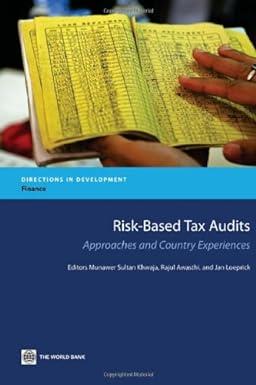Question 1 (18 marks) The following are various management assertions (items 1. through 12.) related to sales and accounts receivable: 1. Recorded accounts receivable exist. 2. Disclosures related to sales are relevant and understandable. 3. Recorded sales transactions have occurred. 4. There are no liens or other restrictions on accounts receivable. 5. All sales transactions have been recorded. 6. Receivables are appropriately classified as to trade and other receivables in the financial statements and are clearly described. 7. Sales transactions have been recorded in the proper period. 8. Accounts receivable are recorded at the correct amounts. 9. Sales transactions have been recorded in the appropriate accounts. 10. All accounts receivable have been recorded. 11. Disclosures related to receivables are at the correct amounts. 12. Sales transactions have been recorded at the correct amounts. Required a) For each assertion, indicate whether it is an assertion about classes of transactions and events or an assertion about account balances. (6 marks) b) Indicate the name of the assertion (12 marks) Management Assertion (list out the item numbers) Question 2 (18 marks) The following are examples of audit procedures: 1. Watch employees count inventory to determine whether company procedures are being followed 2. Count a sample of inventory items and record the amount in the audit files 3. Calculate the ratio of sales commission expense to sales as a test of sales commissions 4. Review the accounts receivable with the credit manager to evaluate their collectibility 5. Compare a sales invoice with the sales journal for customer name and amount 6. Obtain a written statement from a bank stating that the client has $15,671 on deposit and liabilities of $500,000 on a demand note. 7. Add the sales journal entries to determine whether they were correctly totaled. 8. Obtain a letter from the client's attorney addressed to the CPA firm stating that the attorney is not aware of any existing lawsuits. 9. Extend the cost of inventory times the quantity on an inventory listing to test whether it is accurate, 10. Obtain a letter from an insurance company to the CPA firm stating the amount of the fire insurance coverage on buildings and equipment. 11. Examine an insurance policy stating the amount of the fire insurance coverage on buildings and equipment. 12. Calculate the ratio of cost of goods sold to sales as a test of overall reasonableness of gross margin relative to the preceding year. 13. Obtain information about internal control by requesting the client to fill out a questionnaire. 14. Trace goods dispatch notes/sales invoices to entries in sales ledger and trade receivable subledger 15. Examine a piece of equipment to make sure that a major acquisition was actually received and is in operation corporate minutes to determine the authorization of the issue of bonds 17. Discuss and confirm with management that there are no unrecorded 18. Review the total of repairs and maintenance for each month to determine whether any month's total was unusually large. Required Classify each of the preceding items according to the types of audit evidence: (1) inspection of asset, (2) confirmation, (3) inspection of documents (4) analytical procedures, (5) inquiries, (6) recalculation () reperformance, and (8) observation (18 marks) Audit Procedures (list out the item numbers) Answer Question 3 (22 marks) Following are six situations that involve the audit risk model as it is used for planning audit evidence requirements in the audit of accounts receivable. Situation Hich Audit risk Inherent risk Medium Medium Low Low High Low High Medium Low High Hash Control risk Medium High Low LOW Medium High Detection risk Audit evidence Required a. Copy the above table to your answer sheet and fill in the highlighted blanks for detection risk and audit evidence using the terms low, medium, or high (12 marks) b. Using your knowledge of the relationships among the foregoing factors, state the effect on both detection risk and audit evidence (no effect, increase or decrease) of changing each of the following five factors, while the other three remain constant 1. A decrease in audit risk 2. A decrease in control risk 3. A decrease in detection risk 4. A decrease in inherent risk 5. A decrease in inherent risk and an increase in control risk of the same amount (10 marks) Effect on Change in factor (list out the item numbers) Effect on audit evidence 2 Question 4 (12 marks) The following internal controls are in place on the sales and receipts cycle of SPACE Ltd 1. 2. Credit is granted by the credit department Sales returns are presented to the sales department. Statements are sent monthly to customers. Write-offs of accounts receivable are approved by the accounting supervisor Cash is deposited with the bank weekly The bank reconciliation is prepared by individuals independent of the cash receipt record keeping Required Classify the above internal controls (items 1. to 6.) into the following categories with explanations to support your answer: Category I - internal control strengths (6 marks) Explanations Internal controls (list out the item numbers) Category II - internal control weaknesses (6 marks) Explanations Internal controls (list out the item numbers)










